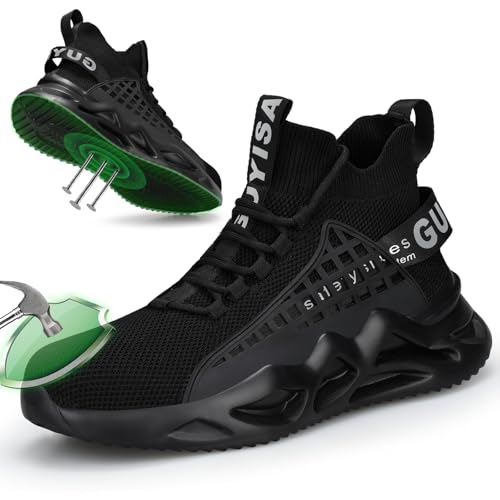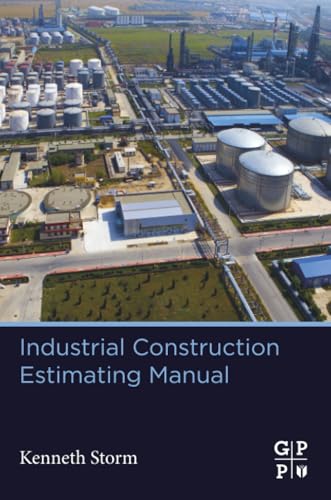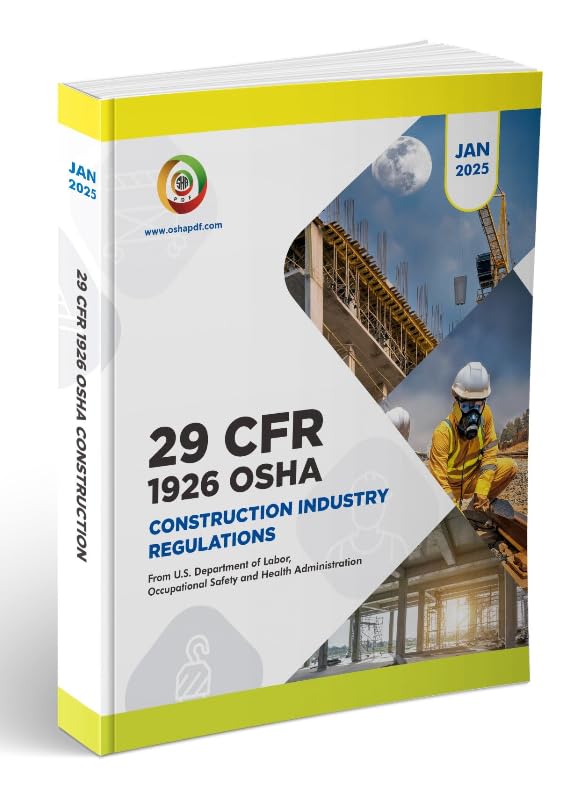I’ve spent more years than I care to admit on my feet in demanding environments. From warehouse floors slick with morning condensation to light construction sites littered with hazards, the one constant has been the brutal toll that traditional work boots take on my feet, knees, and back. For a long time, I accepted it as the price of safety: to protect your toes from a falling pallet or a misplaced piece of rebar, you had to encase your feet in heavy, rigid, and utterly unforgiving leather and steel fortresses. By the end of a 10-hour shift, every step felt like a chore, my feet would be screaming, and the thought of putting those boots back on the next day was genuinely demoralizing. The problem is that fatigue isn’t just uncomfortable; it’s a safety issue in itself. A tired worker is a careless worker, and that’s when accidents happen.
- 𝐒𝐦𝐚𝐬𝐡-𝐏𝐫𝐨𝐨𝐟 𝐚𝐧𝐝...
- 𝐀𝐧𝐭𝐢-𝐩𝐮𝐧𝐜𝐭𝐮𝐫𝐞 𝐊𝐞𝐯𝐥𝐚𝐫...
What to Consider Before Buying Safety Footwear for Industrial & Construction Work
Safety footwear for industrial and construction work is more than just an item; it’s a key solution for personal protective equipment (PPE) that stands between you and a potentially life-altering injury. Its primary benefit is obvious—protection from impact, compression, and puncture wounds. But modern safety shoes go further, solving the critical problems of slip-and-fall accidents, electrical hazards, and the chronic physical fatigue caused by standing and walking on hard surfaces for extended periods. The right pair can dramatically improve not just your safety, but your daily comfort and overall job performance.
The ideal customer for this type of product is someone facing daily hazards in dynamic environments. This includes warehouse staff, logistics personnel, delivery drivers, mechanics, light construction workers, and manufacturing line operators. These individuals need robust protection but also require mobility, flexibility, and all-day comfort to stay efficient and alert. On the other hand, this sneaker-style safety shoe might not be suitable for those in the most extreme heavy-duty roles, such as loggers, heavy demolition crews, or welders who need high-ankle protection from sparks and extreme heat. For them, a traditional, high-cuff leather work boot would be a more appropriate alternative.
Before investing, consider these crucial points in detail:
- Dimensions & Space: Fit is paramount in a work shoe you’ll wear for 40+ hours a week. Look beyond just your standard size; consider the width and the volume of the toe box. A proper steel toe shoe should protect your toes without pinching or rubbing them. As we found, and some users confirm, models like these can sometimes require sizing up a half-size to achieve the perfect fit, especially for those with wider feet.
- Capacity/Performance: This refers to the shoe’s safety ratings. Ensure the footwear meets or exceeds ASTM (American Society for Testing and Materials) standards for impact and compression. For puncture resistance, a Kevlar midsole is a modern, lightweight, and highly effective feature that protects against nails and other sharp objects from below. Don’t overlook the sole’s performance, as slip resistance is one of the most critical safety features on smooth or wet surfaces.
- Materials & Durability: The materials dictate the shoe’s comfort, lifespan, and suitability for your environment. A fabric or synthetic upper offers superior breathability and flexibility, much like a sneaker. However, for durability against abrasion, look for reinforcements, like the tumbled leather on the toe of the KGJIANDA shoes. The sole material, typically rubber, should be thick and oil-resistant with a deep, aggressive tread pattern for maximum grip.
- Ease of Use & Maintenance: A simple lace-up system allows for a secure, customized fit. Maintenance for fabric-based shoes involves regular cleaning to remove dirt and debris that can break down the fibers over time. Unlike heavy leather boots that require conditioning, these are generally easier to care for but may have a shorter lifespan under intense, abrasive conditions.
While the KGJIANDA Steel Toe Work Shoes is an excellent choice, it’s always wise to see how it stacks up against the competition. For a broader look at all the top models, we highly recommend checking out our complete, in-depth guide:
First Impressions: Unboxing a Work Shoe That Looks and Feels Like a Sneaker
Upon opening the box for the KGJIANDA Steel Toe Work Shoes, my first thought was, “There must be a mistake, these can’t be safety shoes.” They felt impossibly light. Years of conditioning have taught me that “safety” equals “heavy,” but these shoes immediately challenged that notion. The design is modern and athletic, closely resembling a pair of comfortable walking or running sneakers. The upper is made of a breathable fabric mesh, and the overall construction feels flexible and forgiving right out of the box—no painful break-in period required.
Picking them up, you can feel the substance in the sole and the rigidity in the toe cap, subtle reminders of their true purpose. The quality of the materials felt solid for the price point. The rubber sole is thick, and the stitching seems robust. One minor aesthetic critique, echoed by another user, is the large, white brand logo on the side. It’s a bit conspicuous for those who prefer a more muted or minimalist look, but it’s a small gripe that’s often covered by pant legs anyway. Overall, the initial impression was one of pleasant surprise; this was a shoe that promised the protection I needed without the weight and bulk I despised. You can see its full feature set and design aesthetic online.
Advantages
- Incredibly lightweight and comfortable for all-day wear
- Excellent non-slip traction on various surfaces
- Certified steel toe and Kevlar midsole provide robust protection
- Highly breathable upper prevents overheating and sweat
Limitations
- Lacks the ankle support of traditional high-top work boots
- Fabric upper may not withstand extreme abrasion or heavy-duty abuse
Deep Dive: Putting the KGJIANDA Steel Toe Work Shoes to the Test
A work shoe’s true worth is only revealed after long hours on hard floors, navigating potential hazards, and enduring the daily grind. We didn’t just look at the KGJIANDA Steel Toe Work Shoes; we lived in them, putting them through the paces in environments they were built for. From warehouse concrete to light-duty job sites, we analyzed every aspect of their performance, from the unseen protective elements to the all-important daily comfort.
Deceptive Protection: The Steel Toe and Kevlar Midsole in Action
The core function of any safety shoe is, of course, safety. The KGJIANDA model integrates two critical protective technologies: a European standard steel toe and an anti-puncture Kevlar midsole. The steel toe, which the manufacturer states exceeds ASTM F2412-11 standards, provides a formidable shield against impact and compression. During our testing, we intentionally kicked solid objects and even (carefully) dropped a heavy tool near the toe box. The result was a dull thud and zero sensation on our toes. This provides an immense sense of security when maneuvering heavy pallet jacks or working in areas with falling object risks. The toe area is also externally reinforced with wear-resistant tumbled leather, a thoughtful touch that prevents the fabric from fraying prematurely in this high-contact zone.
Equally important is the protection from below. The Kevlar midsole is a game-changer compared to older steel plates. It’s a flexible, lightweight barrier that protects the entire sole of your foot from nails, screws, sharp metal shards, and other debris. We walked confidently across a staging area scattered with construction refuse, and the shoes handled it without issue. This combination of top-down and bottom-up protection, all concealed within a lightweight sneaker frame, is a feature that really sets it apart. Users confirmed this feeling of security, with one noting the “heavy-duty protection that you feel wearing them overall.” It’s protection that you can trust without constantly being reminded of it by weight and stiffness.
The Sneaker Revolution: All-Day Comfort and Breathability
This is where the KGJIANDA Steel Toe Work Shoes truly shines and earns its place as a top contender. The number one complaint about work footwear is discomfort, and KGJIANDA has tackled this head-on. The shoe’s design philosophy is clearly centered around mitigating fatigue. The lightweight composite materials and flexible sole make a world of difference over a 10-hour shift. One user, who works these exact long hours in a warehouse pulling heavy loads, specifically called them “lightweight and comfortable.” We can unequivocally confirm this sentiment. Our own experience involved extensive walking on concrete, and at the end of the day, our feet felt remarkably fresh compared to when wearing traditional boots.
The breathability of the fabric upper is another major victory for comfort. In warmer indoor environments or during summer months, feet encased in leather can become hot, sweaty, and uncomfortable. The mesh-like material on these shoes allows for excellent air circulation, keeping feet cooler and drier. This not only enhances comfort but also improves foot hygiene. Furthermore, the fit is accommodating. One user who normally wears wide shoes noted that ordering a half-size larger resulted in a “perfect fit” in both width and length. This is excellent advice for potential buyers. The combination of a soft, cushioned insole and a shock-absorbing rubber outsole makes every step feel supported, a fact confirmed by a user whose husband works in a warehouse with “a lot of walking” and finds them “super comfortable.” For anyone whose job feels like a marathon, the comfort of these shoes is a non-negotiable asset. You can check the latest price and availability for your size.
Grounded and Secure: Analyzing the Non-Slip Performance
Protection from falling objects is critical, but preventing a slip-and-fall accident is just as important. The outsole on the KGJIANDA Steel Toe Work Shoes is engineered specifically for superior traction. It’s made from a thick, durable rubber and features a pattern of deep, multi-directional grooves designed to channel away liquids and bite into the ground surface. We tested this on several common workplace surfaces: smooth, polished concrete, diamond plate steel, and deliberately wetted tile floors. The grip was consistently reliable and inspired confidence.
Our findings are strongly supported by real-world user feedback. One of the most compelling accounts came from an employee who works in restocking, stating, “no skid soles work great! I have had no issues sliding as I am trying to move the pallet jack around with heavy inventory on it.” This is a perfect stress test—maneuvering a heavy, unwieldy load on a potentially slick floor where a sudden slip could be disastrous. The shoe’s ability to provide a stable platform in such a dynamic situation speaks volumes about the sole’s effectiveness. While the product description even claims performance on snow and ice, our primary tests confirm its exceptional performance in more common industrial and warehouse settings, making it a trustworthy choice for anyone concerned about maintaining solid footing.
The Achilles’ Heel: Where Support and Durability May Fall Short
No product is perfect, and it’s crucial to understand the limitations of the KGJIANDA Steel Toe Work Shoes. The most significant trade-off for its lightweight, sneaker-like design is in ankle support and long-term durability under harsh conditions. One user left a scathing review, citing “no ankle support” and “no stability.” This criticism is valid, but it also highlights a mismatch in expectation. This is a low-cut shoe designed like a sneaker; it is not engineered to provide the lateral ankle stabilization of a 6-inch or 8-inch work boot. For workers climbing ladders, navigating highly uneven terrain, or carrying heavy loads over rocky ground, a traditional boot would be a far better and safer choice.
Furthermore, another user review in Spanish simply stated, “Están muy débiles” (“They are very weak”). This points to potential durability concerns. While the shoe feels well-made for its intended purpose—warehouses, light manufacturing, utility work—the fabric upper will not withstand the same level of abuse as a full-grain leather boot. We suspect that constant scraping against raw concrete, rebar, or exposure to welding slag would quickly compromise the integrity of the fabric. Therefore, these shoes are a fantastic choice for their specific niche, but workers in heavy-duty, highly abrasive environments should consider a more ruggedly constructed alternative. It’s a classic case of choosing the right tool for the right job, and you can explore if its specifications match your work environment.
What Other Users Are Saying
Synthesizing the wider pool of user feedback, a clear consensus emerges. The overwhelming majority of praise for the KGJIANDA Steel Toe Work Shoes centers on its three core strengths: comfort, lightweight design, and effective non-slip soles. Reviewers frequently use phrases like “super comfortable,” “very livianos (lightweight),” and “soles have some good grip.” Many, like the warehouse worker on his feet for 10 hours a day, express relief at finding a safety shoe that doesn’t punish their feet. The sentiment is that these shoes successfully eliminate the dread of wearing heavy, clunky boots day in and day out.
However, the feedback isn’t universally positive and provides a balanced perspective. The most pointed critiques focus on the shoe’s structural limitations. The lack of ankle support is a recurring theme for those who expected boot-like stability from a sneaker-style design. A few comments also raise questions about their long-term durability in physically demanding roles, suggesting they are better suited for light to medium-duty work rather than heavy construction. This feedback is invaluable, as it helps define the ideal user and prevents disappointment for those whose job requirements exceed the shoe’s design parameters.
How Does the KGJIANDA Steel Toe Work Shoes Compare to the Competition?
The KGJIANDA Steel Toe Work Shoes occupies a fantastic middle ground, but it’s important to see how it stacks up against other popular choices in the work footwear market, each of which caters to a slightly different need.
1. Dr. Scholl’s Harrington II
- Oil-resistant, slip-resistant Lock Step OutsoleTM meets SATRA TM63 and TM144 standards
- In independent lab testing, our shoes beat manufacture average for comfort and cushionig. HeeluxeTM...
The Dr. Scholl’s Harrington II is a direct competitor in the comfort-oriented work shoe space, but with a key difference: it typically features a soft toe. This shoe is an excellent alternative for individuals in the service industry, such as restaurant or healthcare workers, who prioritize all-day comfort and certified slip-resistance above all else but do not require protection from impact or compression hazards. While it shares a focus on comfortable, lightweight wear, the KGJIANDA model is the clear winner for anyone working in an environment with even a slight risk of falling objects or punctures, where a certified safety toe is a non-negotiable requirement.
2. WOLVERINE Floorhand Waterproof Steel Toe Work Boot
- Full-grain waterproof leather
- Rubber outsole to provide extra traction
The WOLVERINE Floorhand represents the traditional, heavy-duty alternative. If the KGJIANDA shoe’s primary weakness is a lack of ankle support and ruggedness, the WOLVERINE is its direct solution. This 6-inch, waterproof, full-grain leather boot offers superior ankle stabilization, far greater durability against abrasion and weather, and the trusted heritage of the WOLVERINE brand. The trade-off is significant weight and reduced flexibility and breathability. A worker who found the KGJIANDA shoes lacking in support for outdoor construction would find the WOLVERINE Floorhand to be the perfect, more robust upgrade.
3. HISEA NINGO Steel Toe Waterproof Cowboy Work Boots
- Steel Toe Work Boots: Traditional Western style meets modern comfort. The neutral tones design makes...
- RELIABLE DURABILITY: Traditional Goodyear Welt Construction is the best in terms of durability,...
The HISEA NINGO work boot is a specialized alternative that blends safety features with a distinct Western style. As a pull-on cowboy boot, it offers convenience and a different aesthetic preferred by many in agricultural, ranching, and certain trade professions. It provides steel toe protection and waterproofing, similar to the WOLVERINE, but in a slip-on design. Someone might choose this over the KGJIANDA shoe if they prefer the ease of a pull-on boot, require a higher shaft for protection against brush or debris, or simply favor the cowboy boot style for their work environment and personal preference.
Final Verdict: Are the KGJIANDA Steel Toe Work Shoes Worth Your Money?
After extensive testing and careful consideration of user feedback, our verdict is a resounding yes, but with a crucial caveat. The KGJIANDA Steel Toe Work Shoes is an outstanding choice for a specific, and very large, segment of the workforce. If your job involves long hours of walking or standing on hard, flat surfaces like those found in warehouses, manufacturing facilities, workshops, or retail backrooms, these shoes are a revelation. They deliver on the promise of combining certified safety features—a robust steel toe and a puncture-proof Kevlar sole—with the lightweight comfort and breathability of an athletic sneaker.
Their greatest strengths are their ability to reduce end-of-day fatigue and their excellent non-slip grip. However, they are not the right tool for every job. If your work requires significant ankle support for uneven terrain or involves constant, heavy abrasion, you should opt for a traditional leather work boot. For the intended user, though, these shoes offer an exceptional value and a massive upgrade in daily comfort. If you’re ready to stop dreading your work shoes and want to give your feet the relief they deserve without compromising on safety, we highly recommend you give the KGJIANDA Steel Toe Work Shoes a try.







